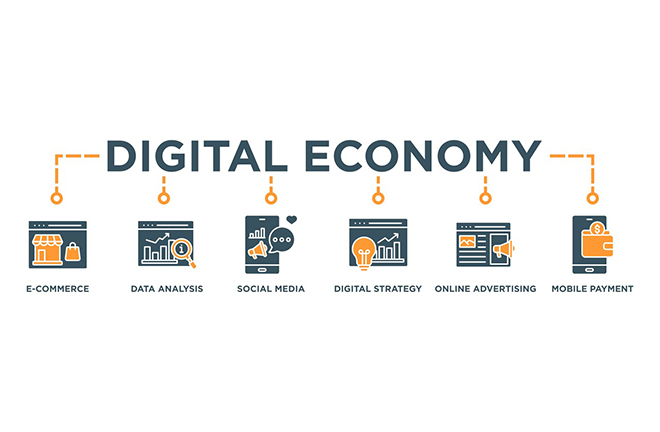New technological revolution ushers in era of new labor

The digital economy creates a great many employment opportunities. Photo: TUCHONG
With the advent of the Fourth Industrial Revolution, new economies such as the platform economy, the gig economy, and the sharing economy, as well as new industries such as the internet industry, the artificial intelligence industry, and cultural and creative industries, are developing rapidly. New forms of labor such as knowledge labor, creative labor, digital labor, platform labor, and “playbor” are also emerging. New workers are driving technological innovation and industrial development, thus becoming an indispensable presence in contemporary Chinese society.
New industries, new economies, and new labor are essentially characterized by “breaking down barriers” and “connecting.” The former refers to the removal of boundaries between different systems and fields, allowing resources and elements within closed systems to be released externally. The latter draws upon connectionism in the fields of computer science and artificial intelligence, suggesting that machines and the human brain can imitate and interface with each other.
Modes of labor
Human labor requires the full engagement of one’s physical abilities. Subsistence agriculture requires laborers to simultaneously utilize their physical, cognitive, and emotional capabilities. In the industrial age, the trend towards technical specialization led to divides between physical labor, emotional labor, and cognitive labor.
In the digital age, value creation relies not only on enhanced production efficiency but also on increased consumption and the surge of creative ideas and new demands. New labor demands that workers break down the barriers between physical, cognitive, and emotional capabilities and reconnect them according to specific production requirements. This process constitutes a higher-level connection compared to the connections entailed in agricultural labor.
Spatiotemporal dimensions of labor
Agricultural labor is subject to “natural time.” In the industrial age, previously integrated work-life spacetime was split by workdays and places for centralized production, i.e. factories. Labor spacetime was segmented into parts adapted to industrial production processes, making working time strict and rigid.
In the digital age, new technologies, new professions, and new tasks are springing up, dissolving the spatiotemporal boundaries of new labor. While this reduces the cost of production and capital circulation and gives workers more control over their own pace of work, it also causes unprecedented anxiety and occupational burnout for many individuals. The spatiotemporal state of new workers is reshaped by two mechanisms.
First, the spatiotemporal dimensions of various individual activities, different time zones, different regions, and different local tasks all intersect and overlap, with everyone’s spacetime affected by that of others. Second, management control strategies often lead to the overlap of tasks, where the time allocated for one task encroaches upon the time for others. Ultimately, it is the most vulnerable aspect—the personal spacetime—that is most frequently invaded.
Labor organization
Traditional industrial labor is primarily based on rational logic, bureaucracy, Fordism, and Taylorism. Employers systematically manipulated the actions of workers by implementing and adjusting institutions so that work was performed as employers expected. Today, the logic of both value added and production has changed.
First, production labor is no longer arranged solely by top-down rules and regulations, and workers are given more autonomy. Second, non-institutional factors such as environment, atmosphere, mentality, emotion, experience, and cognition are increasingly important in the labor process. Third, the employer-employee relationship is increasingly ambiguous, with more and more new workers seeking to invest in themselves and improve their self-worth.
While the “breaking down barriers” and “connecting” characteristics of new labor have the potential to overcome resource and financial constraints, they may also exacerbate the “rat race,” resulting in a situation where workers are exhausted but productivity growth remains stagnant. Connecting various elements within different modes of labor through new logic and new mechanisms to develop new quality productive forces and promote innovative production, employee well-being, and societal development necessitates significant social support, including the elimination of various forms of discrimination as well as the upgrading and innovation of areas such as education, social governance, and labor laws and regulations.
Jia Wenjuan is an associate professor from the School of Sociology and Political Science at Shanghai University.
Edited by WANG YOURAN

 PRINT
PRINT CLOSE
CLOSE